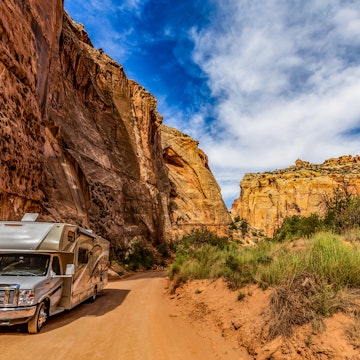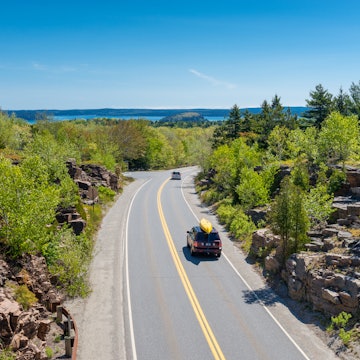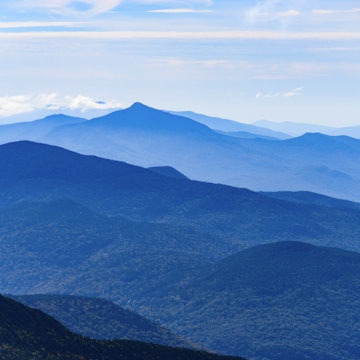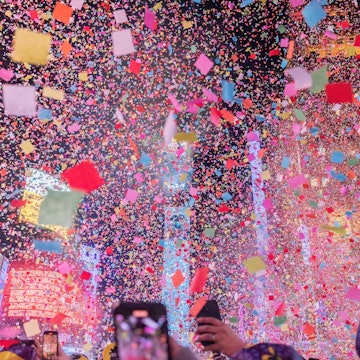

Northern Liberties neighborhood in Philadelphia, Pennsylvania. Darren LoPrinzi/Getty Images
Walking is one of the best ways to familiarize yourself with a new place. You can take your time, follow your whims and stop at a moment’s notice when you spot something interesting. Strolling along, you’re fully immersed in a city’s architecture and vibes – with no barrier between you and the world around you.
And, as a budget-conscious vacationer, being able to walk nearly everywhere can help you save money, since you don’t need to pay for an expensive rental car. Walking also eliminates some of the logistical hassles of travel, like finding a place to park or navigating rush-hour traffic.
If you’re a fan of exploring on your own two feet, plan your next trip to one of these pedestrian-friendly cities around the US.

Boulder, Colorado
Boulder consistently ranks as one of the happiest, most livable cities in the US – and its walkability is a major contributing factor. Situated in the shadow of dramatic rock formations known as the Flatirons, Boulder has long prioritized open space, trails and other features designed to get people up and moving (cycling is big here, too).
This college town’s most famous street is the Pearl Street Mall, a pedestrian-only thoroughfare lined with shops, restaurants, bars and shady trees. Beyond that, it’s got more than 150 miles of natural hiking trails, 70 miles of multi-use paths and 500 miles of sidewalks – perfect for exploring on foot during your next vacation to Colorado.
Take a walk in Boulder: Start at Scott Carpenter Park (named for a NASA astronaut who grew up in Boulder) and head west along the Boulder Creek Path. This is the city’s scenic main artery, so you’ll see lots of folks out and about jogging, pushing strollers, walking their dogs and cycling. Keep going and you’ll pass the University of Colorado Boulder, which is regularly regarded as one of the most beautiful college campuses in the country.
Make a food and drink pitstop at the Boulder Dushanbe Teahouse, an elaborately decorated venue that symbolizes Boulder’s sister-city relationship with Dushanbe, Tajikistan. Next door, peruse the Boulder Museum of Contemporary Art. And on Saturdays and Wednesdays in the summer, stock up on locally grown produce at the Boulder County Farmers Market.

Philadelphia, Pennsylvania
Lots of East Coast cities are easy to navigate on foot. But for travelers with a penchant for history, Philadelphia stands apart. Here, you can lace up your walking shoes and hit multiple hallowed American landmarks within the same stroll – Independence Hall and the Liberty Bell, for example, are mere steps apart.
This vibrant city also has a compact layout that makes walking a dream – all thanks to William Penn, who founded Pennsylvania and designed the grid-like layout of Philly’s downtown back in the 17th century. You can saunter from one side of the Center City neighborhood to the other in less than an hour, since it’s just 26 blocks from east to west. Other parts of Philly are ideal for exploring on foot, too, like Fishtown, Rittenhouse Square and Fairmount.
Take a walk in Philadelphia: You’re probably visiting Philly – at least in part – because you want to experience American history. So, take yourself on a self-guided walking tour of some of the nation’s most influential sites.
Start at Independence Hall to see where America’s forefathers debated and inked the Declaration of Independence and the U.S. Constitution. Sidle over to the Liberty Bell Center to see the famous cracked icon. Head two blocks east to the Benjamin Franklin Museum, located on the site of the illustrious inventor’s long-time home. Then, for a little time travel adventure, head northeast to Elfreth’s Alley, a cobblestone street lined with more than 30 structures built between 1720 and 1836.
Need a break from all the remnants of the past? Head west for a little less than a mile to Reading Terminal Market, the city’s oldest public market. Once inside, you’ll find yourself immersed in the sights, sounds and aromas of Philly, with more than 75 vendors offering everything from fancy corn dogs to African art.

Greenville, South Carolina
Visiting Greenville? Don’t bother renting a car. This revitalized mill town in the Upstate region of South Carolina is incredibly pedestrian-friendly, especially if you book a room at a centrally located hotel like Grand Bohemian Lodge or The Westin Poinsett, Greenville.
From your lodging, you’ll be able to walk right out the front door and start exploring – without needing to fuss with parking or traffic. Downtown Greenville has wide, spacious sidewalks shaded by towering trees, making it easy to visit the abundant restaurants, boutiques and galleries. And on Saturday mornings from May through October, Main Street is closed to cars to make way for the city’s bustling market, which features colorful fruits and veggies, plus artisanal products.
Take a walk in Greenville: The crown jewel of Greenville is the Swamp Rabbit Trail, a 28-mile multi-use path that hugs the curves of the Reedy River. It’s easy to access from downtown and connects you with some of Greenville’s must-see attractions.
First stop? Falls Park on the Reedy, a lush riverfront spot with gorgeous waterfalls and the curved Liberty Bridge. From here, mosey northwest until you reach Unity Park, a true Greenville gem featuring expansive green spaces, playgrounds and community vibes. Stop into The Commons food hall for a bite to eat or sip a refreshing craft beer on the spacious patio of Southernside Brewing Co.
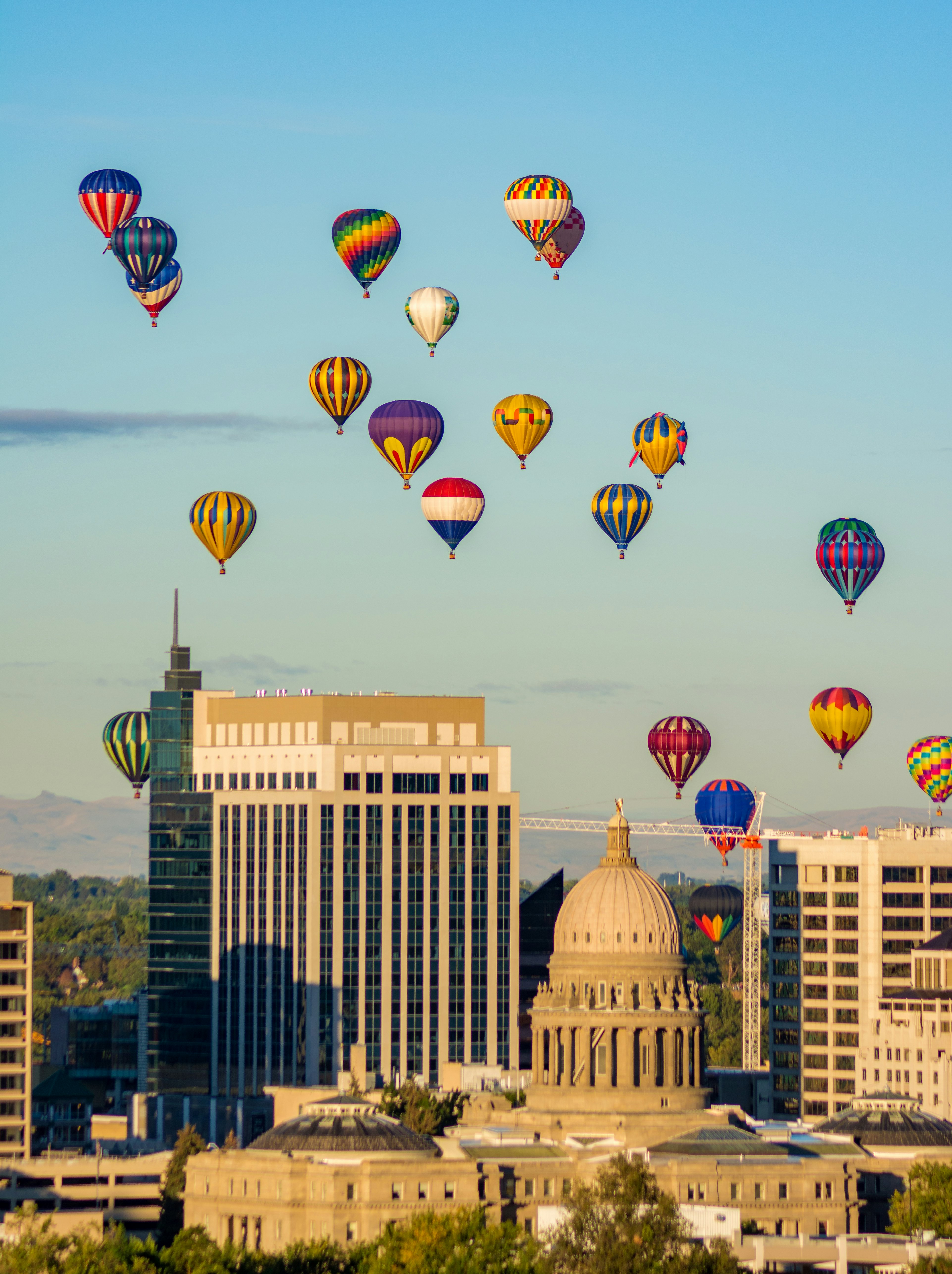
Boise, Idaho
Whether you’re visiting to eat your way through Boise’s famed “potato trail,” immerse yourself in Basque culture or check out the abundant public art, you won’t need to pack much more than a good pair of walking shoes. Getting around on foot is a breeze, thanks to Boise’s compact footprint and well-connected pedestrian infrastructure.
Downtown Boise is home to the 8th Street Promenade, a lively two-block pedestrian mall that provides easy access to Freak Alley (an incredible open-air mural gallery), the Grove Plaza (a hub for community events), shops, restaurants and more. Just northeast of downtown, the Military Reserve is a 734-acre natural area in the foothills with some of Boise’s best hiking trails.
Take a walk in Boise: Boise’s nickname is the “City of Trees,” and when you take a walk along the Boise River Greenbelt, you’ll immediately understand why. This tree-lined path runs right through the heart of town, connecting parks, museums, a golf course, the Boise State University campus and other attractions.
The entire greenbelt spans 25 miles, but one of the best stretches is just south of downtown. Stroll around Julia Davis Park, home to Zoo Boise, the Idaho State Museum, the Idaho Black History Museum, the Boise Art Museum, the Boise Rose Garden and more. Head west for a moment of reflection at the Idaho Anne Frank Human Rights Memorial, then continue for about a mile until you reach the Green Acres Food Truck Park, which is perfect for a snack and a drink.

Providence, Rhode Island
Shops, restaurants, theaters, museums, historic sites and other attractions are all within walking distance of each other in Providence, Rhode Island. And it’s not just the city’s compact downtown that’s friendly to pedestrians, either. Neighborhoods like Fox Point, Federal Hill and College Hill are also a breeze to navigate on foot – so you can explore multiple parts of Rhode Island’s capital city without ever setting foot in a car. Just be forewarned: Providence is super hilly, so you may need to go slow and take breaks as you roam around on foot.
Take a walk in Providence: Wandering along the 2.4-mile Providence Riverwalk is one of the best ways to get acquainted with this historic New England community.
Meander across the Michael S. Van Leesten Memorial pedestrian bridge, pausing to snap a few photos of the city skyline. Continue north through 195 District Park, which is usually buzzing with people, activities and events.
Cross the river at South Water Street, then pay your respects at Memorial Park, a beautiful and contemplative spot filled with sculptures and monuments dedicated to individuals who lost their lives during global conflicts. If you’re feeling peckish, pop into Hemenway’s for oysters and tuna crudo.
Admire the campus of the Rhode Island School of Design – and be sure to keep an eye out for gondoliers rowing authentic Venetian gondolas (you can try to nab a ride on the spot, but it’s best to make a reservation in advance). Wrap up at Waterplace Park, which is home to WaterFire, a popular art installation that combines fire, music and performers.

Seattle, Washington
From Pioneer Square and Belltown to Fremont and Ballard, Seattle is brimming with walkable neighborhoods. Situated on Puget Sound, the Washington's biggest city has more than 2,400 miles of sidewalks, and city leaders are currently working to add even more. Seattle also has hundreds of acres of parks and open space that are criss-crossed with hiking trails – so if you need an escape from the bustling city, you’re never far from the serenity of nature.
You may have heard it rains a lot in Seattle. But the weather doesn’t have to put a damper on your dreams of sashaying around the Emerald City. Remember: There is no such thing as bad weather, only bad gear. Don your raincoat, grab an umbrella and lace up some sturdy walking shoes.
Take a walk in Seattle: Feel the sea breezes – and keep an eye out for critters like harbor seals and gulls – while strolling along the Seattle waterfront. Get a bird’s eye view and enjoy an exhilarating ride on the Seattle Great Wheel, then head northwest until you reach the Seattle Aquarium. Drop in to see creatures like sharks, stingrays, otters, seals and birds before continuing your journey.
As you keep ambling, you might get lucky and spot a cruise ship parked at Pier 66, since Seattle is a big hub for voyages to Alaska. Grab a meal at Six Seven Restaurant, located inside the historic Edgewater Hotel, which famously hosted the Beatles during their first American tour in 1964.
From here, get inspired at Olympic Sculpture Park, which is filled with large, colorful, Instagram-worthy masterpieces. If you’re not tired yet, keep going to Myrtle Edwards Park, where you can soak up the views of Elliott Bay and the Olympic Mountains.
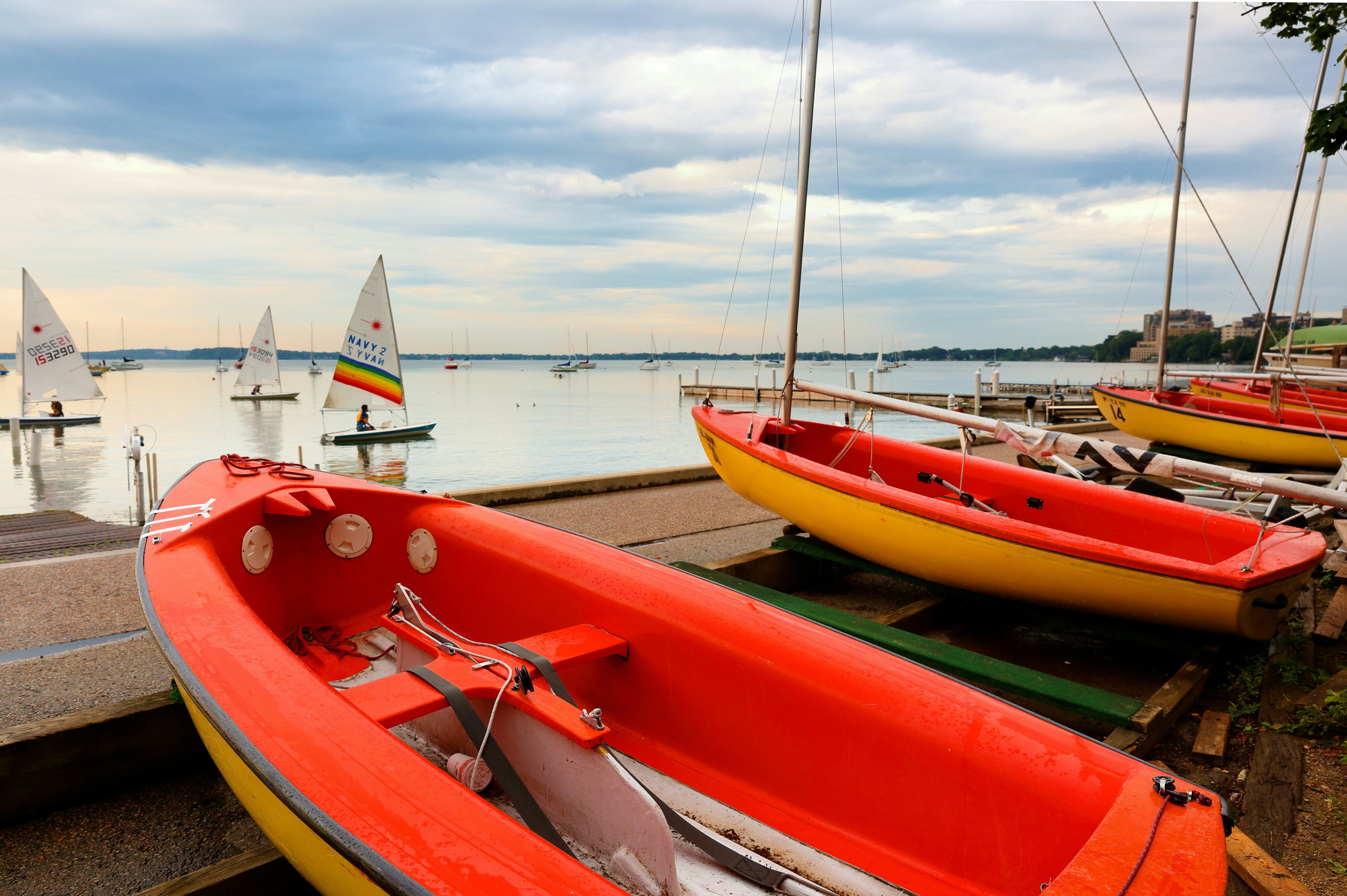
Madison, Wisconsin
Located in south-central Wisconsin, Madison is one of the safest cities for pedestrians in the country. That’s largely due to its walk-friendly infrastructure, which includes nearly 1,200 miles of sidewalk and more than 200 miles of biking and hiking trails in and around the city.
In recent years, Madison has also been experimenting with closing certain streets to cars to make them into pedestrian malls. For little ones, the city has a robust school crossing guard program, as well as other initiatives designed to encourage more kids to walk to school. You’ll also see lots of students getting around on foot on the University of Wisconsin-Madison campus, located in the heart of town along the southern shores of Lake Mendota.
Take a walk in Madison: Technically, you could walk all the way around Madison’s Lake Monona – but, at 13 miles, the full loop might be a bit of a challenge. Instead, explore a section at a time.
If you’re new in town, start at Olin Park and head clockwise. As you stride next to John Nolen Drive, you’ll have views of the lake and the downtown skyline beyond. Keep going until you reach the Monona Terrace, which was designed by renowned architect Frank Lloyd Wright.
Meander over to Capitol Square and admire the stately seat of Wisconsin’s government. Guided tours of the capitol building are free and offered daily year-round. And, from mid-April through December, the seasonal observation deck offers some of the best views in town. If you get hungry, venture over to the Great Dane Pub & Brewing Company for an order of cheese curds – Wisconsin’s squeaky speciality.










